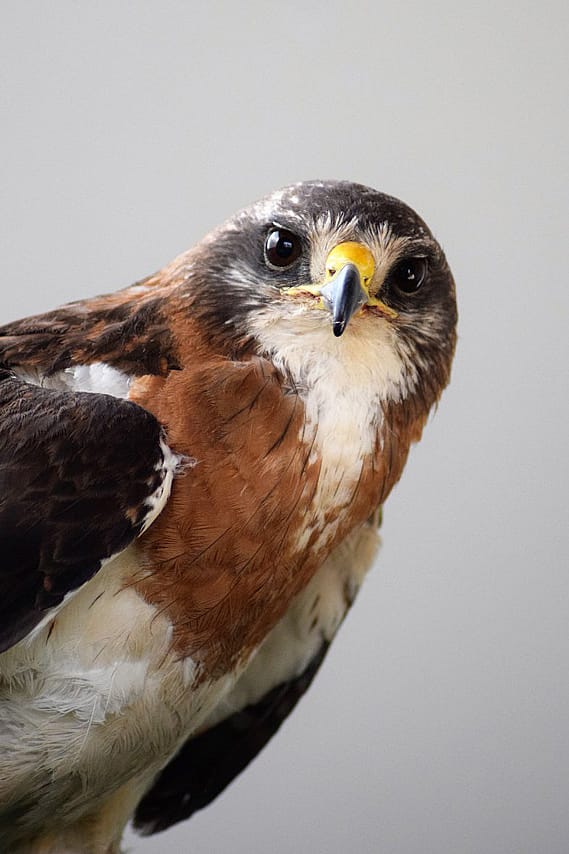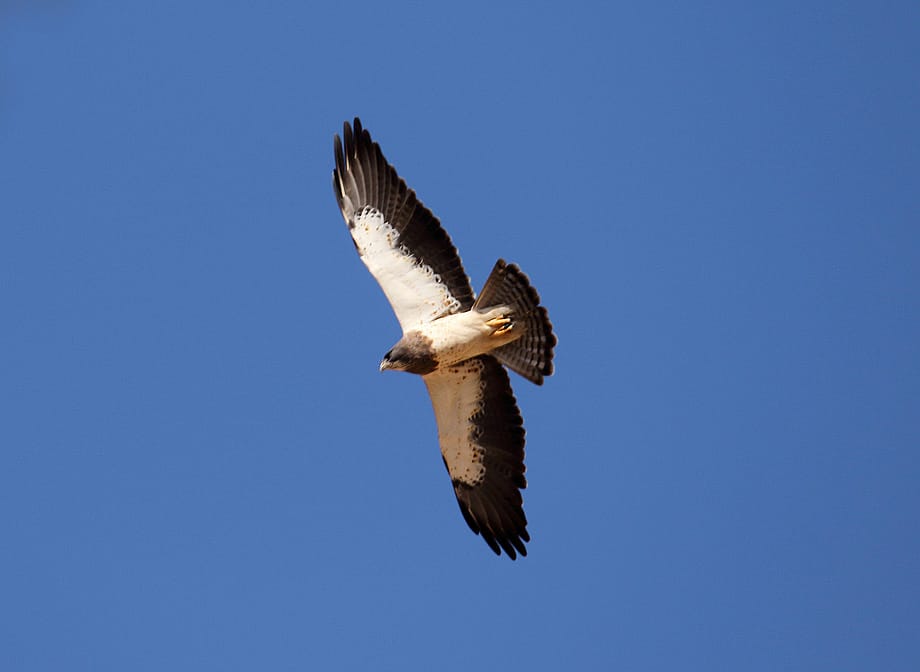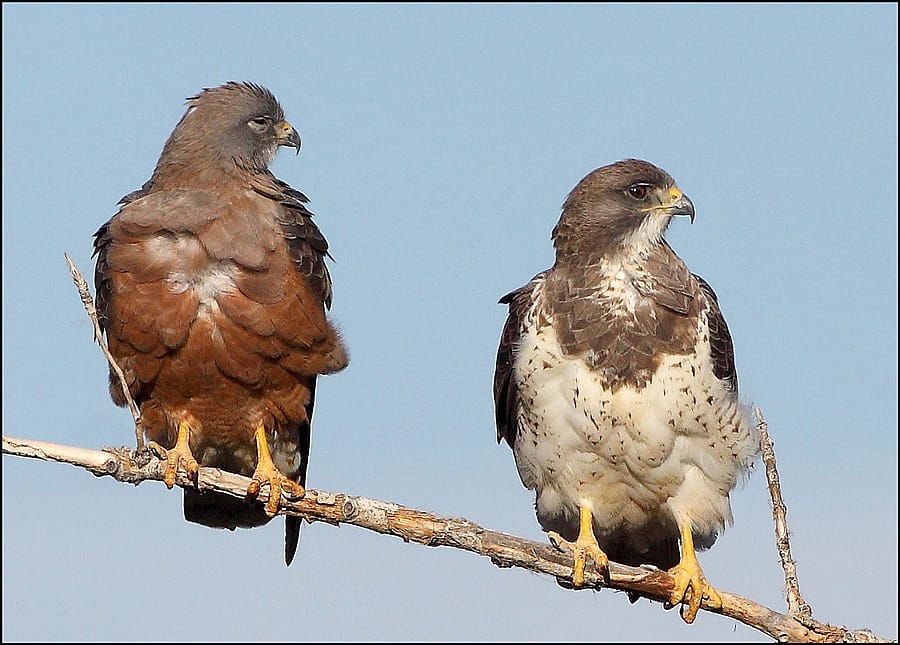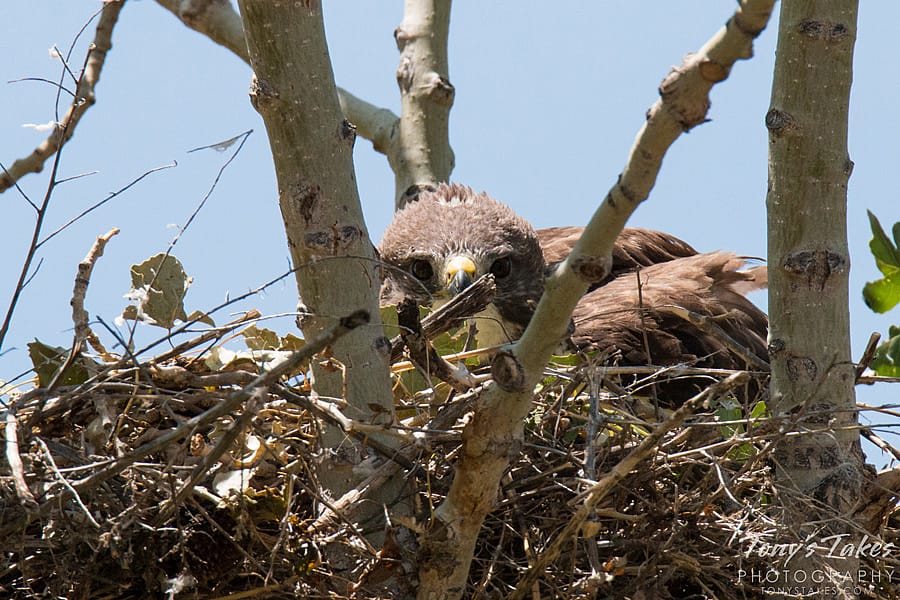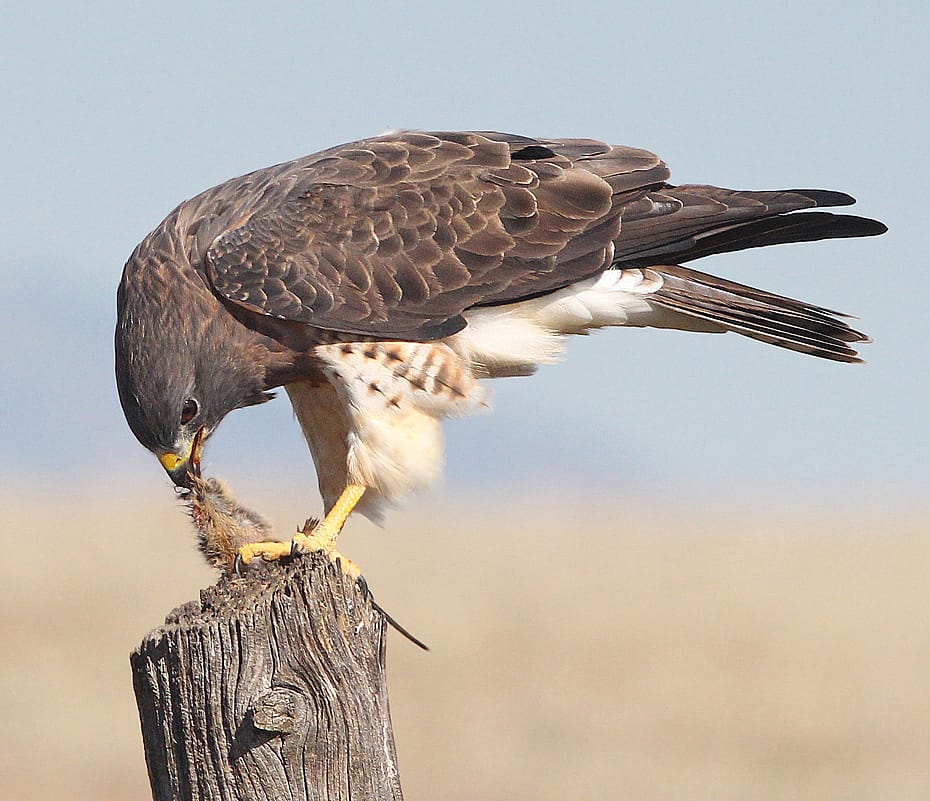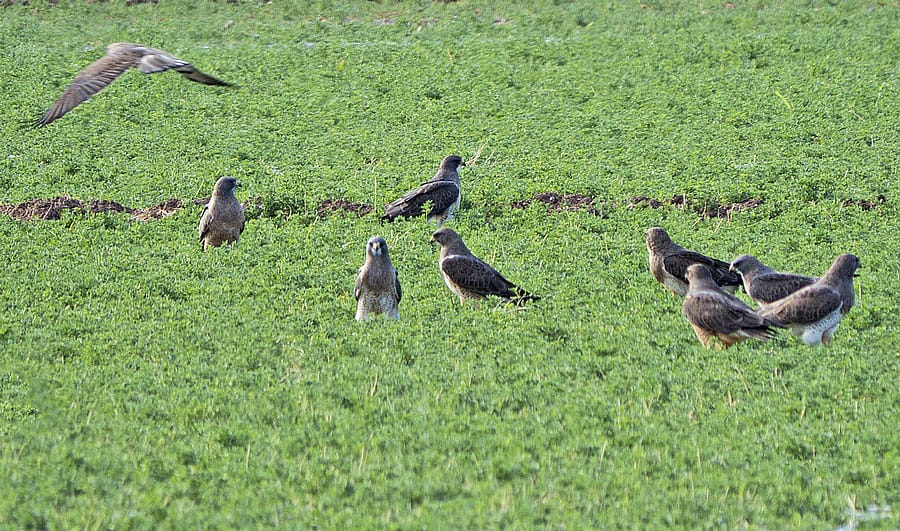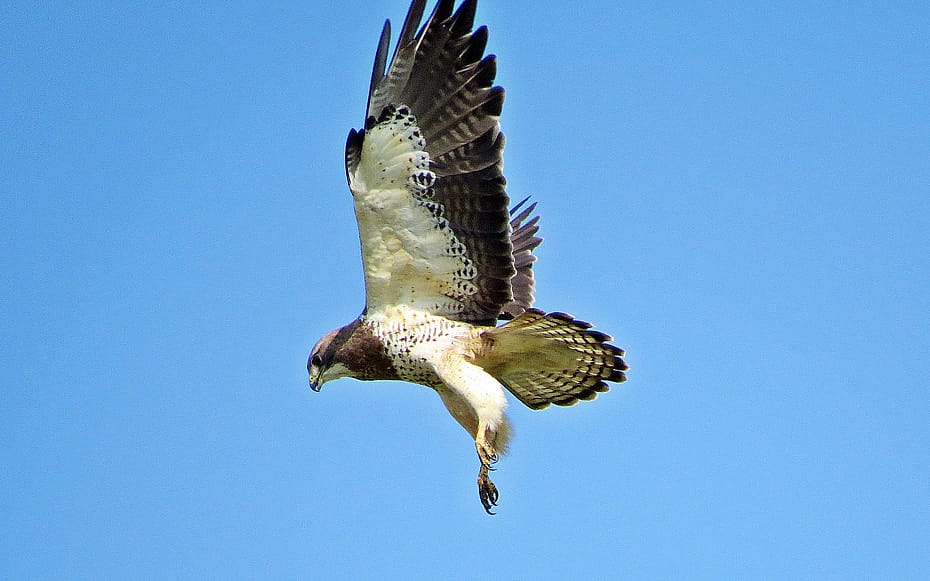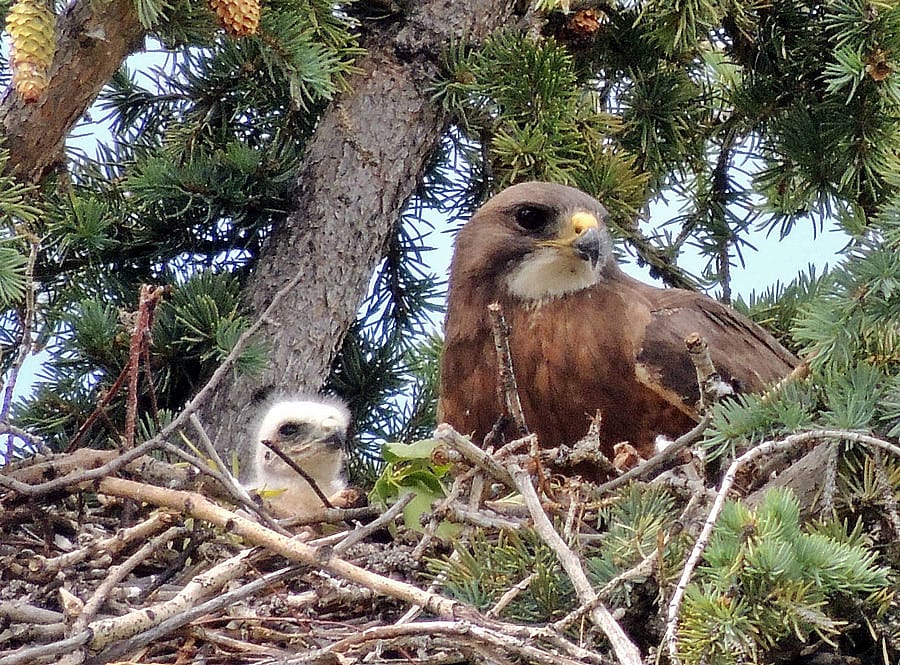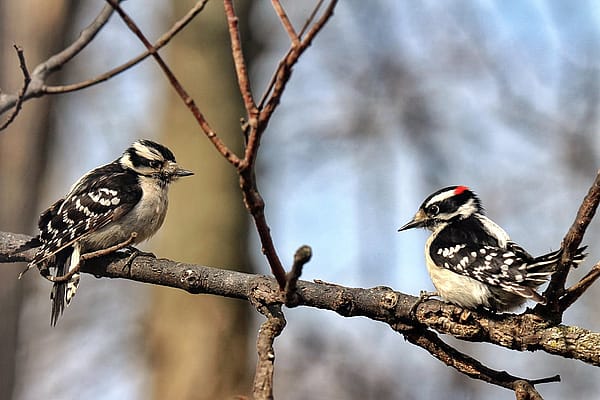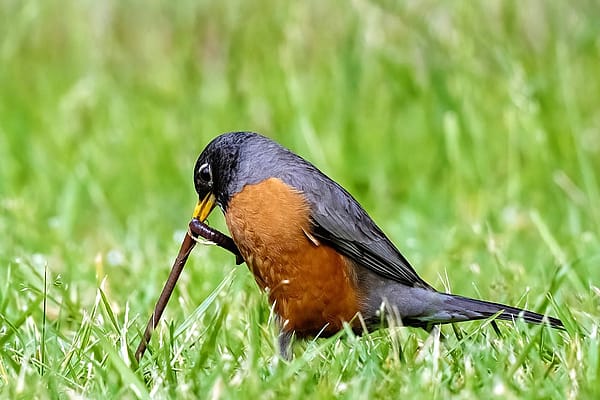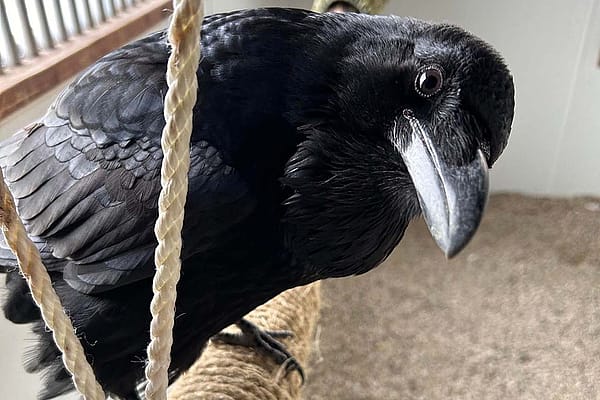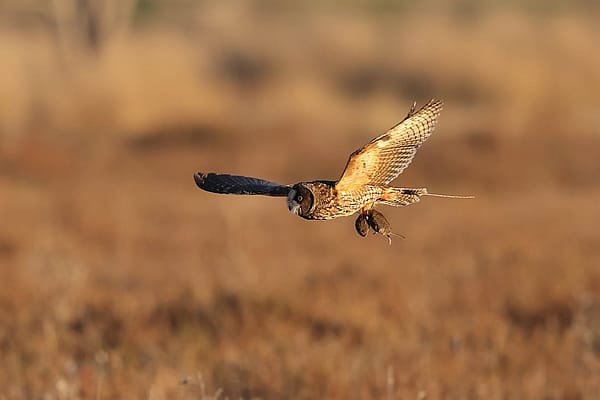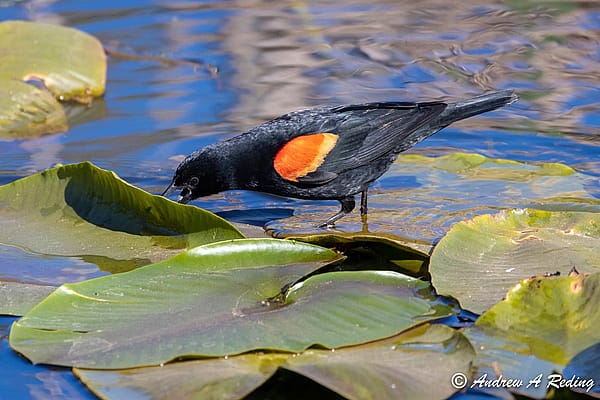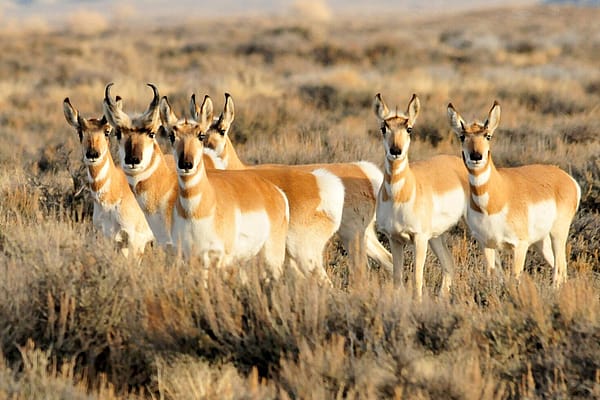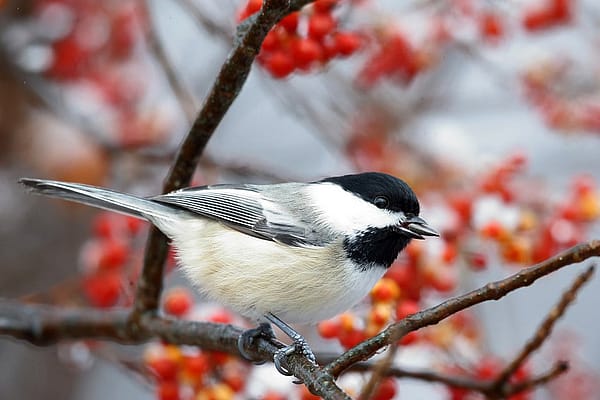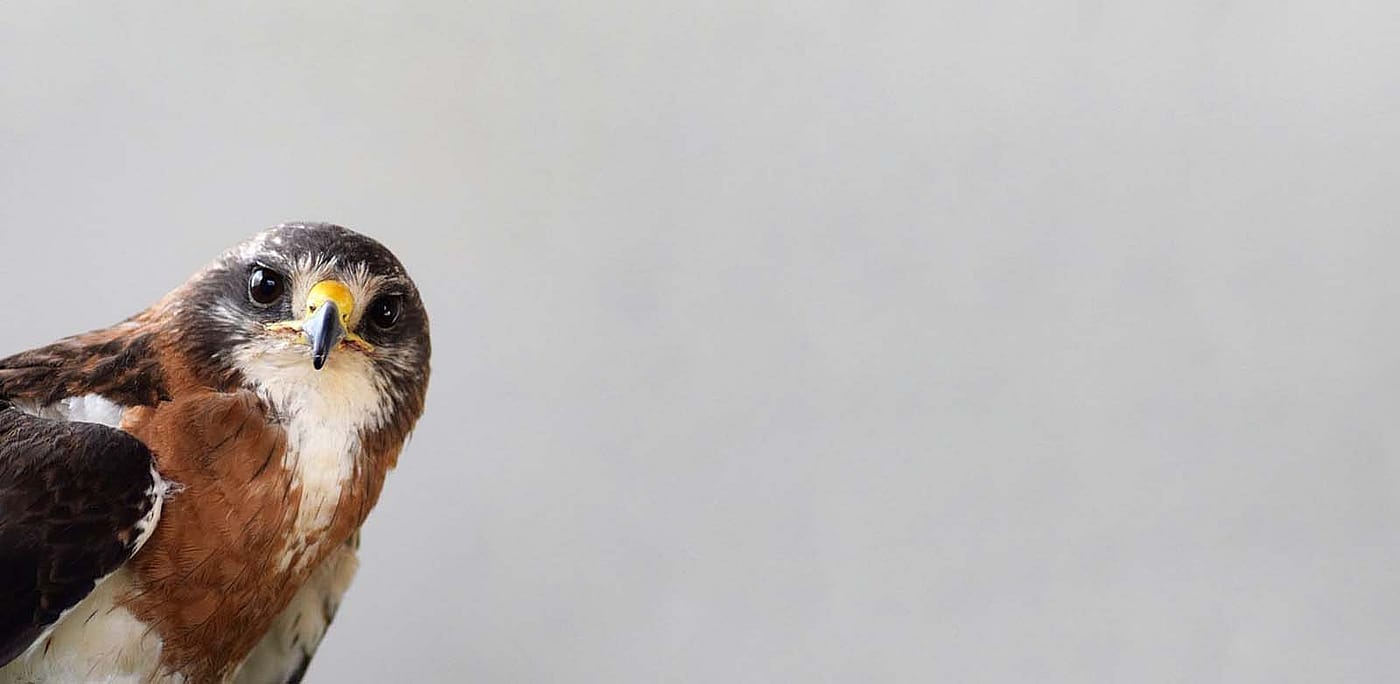
Introducing the Swainson’s Hawk
It’s summer, and you think you may have heard the scream of a Red-tailed Hawk. You look up, and see a bird with a contrasting two-toned underside consisting of dark flight feathers and paler underwing coverts. You are pleased, maybe even surprised, to see a Swainson’s Hawk -a raptor that resides in the western part of the US, Canada, and northern Mexico during its breeding season. A Swainson’s scream is similar to a Red-tailed Hawk, but less raspy and higher-pitched.
Check out this YouTube link for an example of a Swainson’s call: https://www.youtube.com/watch?v=0LwqGthBagI
Our Swainson’s Hawk, Hayden, and the hawk in the photo above are both light morph hawks meaning the area between the bib and the lower belly is very light in color. These raptors may also be a dark morph or intermediate (sometimes called rufous) morph.
In this blog I will discuss 6 lifestyle facts about Swainson’s Hawks.
Nesting
Swainson’s Hawks prefer nesting in trees located in open habitats such as prairies, grasslands, agricultural areas, and deserts. Typically they favor constructing their nest in large trees. In areas where large trees are not available, however, they may choose small trees or even mesquite bushes as low as three feet off the ground. Occasionally they may nest on power poles, and on rare occasions they will even nest on the ground. The male chooses the site and both members will work on the construction. It can take up to two weeks to construct a nest, with the male bringing most of the nesting materials. Typically the nest will be a loose bundle of sticks and twigs, but debris such as rope and wire may be present. When completed, the nest may reach two feet in diameter and be over a foot tall. Swainson’s are known to be mostly monogamous, and will often return to the previous nesting site. Nests may be refurbished and used the next year. In this case, new lining, such as leafy greens, grass, smaller twigs, weeds, bark, and sometimes cow dung or wool, are added. At other times the hawks may choose to take over the nest of another species, such as crows, ravens, and magpies, refurbishing or building on top of the acquired nest. As the chicks hatch, the female will at first remain with the chicks, and the male will hunt. As the chicks mature, both parents will hunt and bring food for the chicks.
Prey
During the breeding season, the Swainson’s Hawks main prey is mammals. These mammals may range in size from mice to ground squirrels, gophers, and cottontail rabbits. They may also prey on reptiles such as lizards and snakes, as well as bats and small birds. The remainder of the year, Swainson’s Hawks feed almost exclusively on insects such as crickets, beetles, grasshoppers, dragonflies, moths, and butterflies. It has been estimated that one hawk may consume 100 grasshoppers in a day, making them a valuable helper to farmers. It is believed the breeding season diet of vertebrate critters may be due to the chick’s need for calcium. In the fall, these hawks may be seen in large groups fattening up on grasshoppers in preparation for their long migration.
Hunting Behavior
Swainson’s Hawks have a variety of hunting behaviors. They may be seen soaring low over a field or prairie while hunting and they are adept at hovering as they look below for possible prey. Insects such as butterflies, moths, dragonflies, and beetles may be caught and eaten on the wing. They may be seen perching on an elevated location such as utility poles, looking out over the landscape for prey. Swainson’s Hawks may also be seen following tractors as they till up the soil, displacing rodents and insects. They may even take advantage of farm sprinkler and ditch systems, dining on rodents fleeing the irrigation water. They even frequently hunt on foot, chasing after insects and small mammals. Swainson’s Hawks have also been observed hunting along the edges of grass fires trying to catch fleeing rodents.
Check out this video describing hunting Swainson’s Hawks and agriculture. Take note of the hovering behavior at 0:55.
https://www.youtube.com/watch?v=OdCakQFzPf4
Video of a hovering Swainson’s Hawk: https://www.youtube.com/watch?v=wem06Oy6og8
Migration and Territory
Swainson’s Hawks make one of the longest migrations of all North American raptors (the Peregrine Falcon may possibly outdo them). Almost all Swainson’s Hawks residing in the temperate areas of North America in the summer months fly to Argentina in the Fall (The Crossley ID Guide Raptors, Richard Crossley, Jerry Liguori, Brian Sullivan). That can be a distance of 6,200 to 7,000 miles one way! (Raptors of the West Captured in Photographs by Kate Davis) Generally beginning in late August or September, Swainson’s Hawks will gather in large groups, at times containing as many as 10,000 birds, as they begin their migration. In the bottleneck area of Veracruz, Mexico, as many as 800,000 Swainson’s Hawk may pass over in a season. Soaring on thermals, these hawks will cross the high Andes, then glide down into the grasslands of Argentina – their main wintering home. Migrants may also be found in Brazil and Paraguay. This migration may take up to two months to complete. It is believed that during this long migration, Swainson’s Hawks may travel for several days without feeding.
Territorial Behavior of the Swainson’s Hawk
As previously noted, Swainson’s Hawks may be seen in huge flocks (called kettles) as they migrate. In addition, they may congregate on the ground where there is plentiful prey, such as in active agricultural areas. These hawks are territorial on their immediate breeding grounds, although in locales with a high density of breeding pairs they may have overlapping areas of shared territories on which to hunt.
Conservation Issues
In 1995 and 1996 thousands of Swainson’s Hawks wintering in Argentina were killed by eating insects poisoned by the insecticides monocrotophos and dimethoat which were used to control grasshoppers in agricultural areas. It is estimated that 35,000 birds died in Argentina in just one season. After this incident, these pesticides were banned and an educational campaign began to bring awareness to the problem. These programs seem to have been successful. Currently when a loss is noted it is often due to environmental changes such as loss of prey and/or nesting sites. Other pesticides, however, may be a continuing concern for the health of Swainson’s Hawks. According to the Audubon Society, California is one area where there appears to be a serious decline in their population. It is believed that this may be due to secondary poisoning from other pesticides as well as habitat loss. Wind energy may also present a problem for Swainson’s Hawks and other migratory birds. Despite these concerns, it is generally believed that the overall population of Swainson’s Hawks is stable.
Photo Credits:
Opening photo of Hayden by Melissa Hill, Assistant Curator, Draper Museum Raptor Experience, https://www.facebook.com/pg/DraperMuseumRaptorExperience/posts/?ref=notif
Swainson’s Hawk in flight, Dominic Sherony, Attribution-ShareAlike 2.0 Generic License, https://www.flickr.com/photos/9765210@N03/ Note this license allows me to edit the photo. I have made slight adjustments to the contrast and sharpness.
Dark and light morph Swainson’s Hawks, Pat Gaines, Attribution NonCommercial 2.0 Generic License, https://www.flickr.com/photos/patgaines/
Swainson’s nest in tree, USFWS Mountin-Prairie, Attribution License, https://www.flickr.com/photos/usfwsmtnprairie/ Note this license allows me to edit the photo. I have made slight adjustments to the contrast and sharpness.
Female Swainson’s on a nest, Tony’s Takes, Attribution-NonCommercial, NoDerivs License, https://www.flickr.com/photos/tonystakes/
Swainson’s Hawk feeding on a post, Alan Schmierer, Public Domain, https://www.flickr.com/photos/sloalan/
Swainson’s Hawks hunting on ground, greenheron47, Attribution- NonCommercial 2.0 Generic License, https://www.flickr.com/photos/57014685@N03/
Swainson’s Hawk with chick, and Swainson’s Hawk Hovering, by Bob, Attribution, NonCommercial, NoDerivs, https://www.flickr.com/photos/bobandthebirds/
Written By
Anne Hay
Anne Hay has a Bachelor's degree in Elementary Education and a Master's in Computers in Education. She spent most of her working years teaching third grade at Livingston School in Cody, Wyoming. After retiring she began doing a variety of volunteer work for the Buffalo Bill Center of the West’s Draper Natural History Museum. Anne loves nature and has a concern for the environment. She believes that educating the public, so that they will have a better understanding and appreciation for the natural world, is very important. Because of this belief, volunteering at the Center is a perfect fit. She spends time in the Draper Lab, observing eagle nests for Dr. Charles Preston’s long-term research project on nesting golden eagles, writing observation reports of raptor sightings in the Bighorn Basin, and working with the Draper Museum Raptor Experience. Anne states that, “Having a bird on my glove, is one of my all time favorite things in life.”
